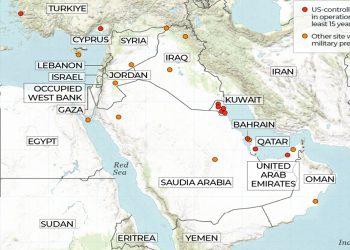WASHINGTON: Newly obtained Pentagon documents show that the US air wars in the Middle East have been marked by “deeply flawed intelligence” and resulted in thousands of civilian deaths, including many children, the New York Times reported.
The trove of documents — the military’s own confidential assessments of more than 1,300 reports of civilian casualties, obtained by The New York Times — lays bare how the air war has been marked by deeply flawed intelligence, a sharp contrast to the US government’s image of war waged by precision bombs.
The paper obtained the Pentagon documents through Freedom of Information requests beginning in March 2017 and lawsuits filed against the Defense Department and the Central Command. A new suit seeks records from Afghanistan.
Pledges of transparency and accountability, it said, had regularly fallen short. “Not a single record provided includes a finding of wrongdoing or disciplinary action,” the paper reported in what it said was the first of a two-part series.
Surveillance flaws
Among three cases cited was a July 19, 2016 bombing by US special forces of what were believed to be three Islamic State group staging areas in northern Syria. Initial reports were of 85 fighters killed. Instead, the dead were 120 farmers and other villagers.
Another example was a November 2015 attack in Ramadi, Iraq after a man was seen dragging “an unknown heavy object” into an Islamic State position. The “object,” a review found, was a child, who died in the strike.
More recently, the United States had to retract its claim that a vehicle destroyed by a drone on a Kabul street in August had contained bombs. Victims of the strike, it turned out, were 10 members of a family, including children.
Many civilian survivors of US attacks, the report says, were left with disabilities requiring expensive treatment, but condolence payments numbered fewer than a dozen.
Asked for comment, Captain Bill Urban, spokesman for the US Central Command, told the Times that “even with the best technology in the world, mistakes do happen, whether based on incomplete information or misinterpretation of the information available. And we try to learn from those mistakes.
The US air campaign in the Middle East grew rapidly in the final years of former president Barack Obama’s administration, as public support waned for the seemingly endless ground wars.
The new technology made it possible to destroy a part of a house filled with enemy fighters while leaving the rest of the structure standing, the Pentagon said.
But over a five-year period, US forces executed more than 50,000 airstrikes in Afghanistan, Iraq and Syria, the report said, with much less than the advertised precision.
In compiling its report, the Times said its reporters had “visited more than 100 casualty sites and interviewed scores of surviving residents and current and former American officials.”

































